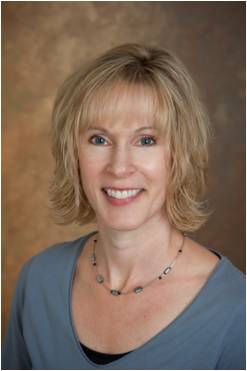Kristi Kiick is a Professor of Materials Science and Engineering and a Professor of Biomedical Engineering at the University of Delaware (UD), and also serves as Deputy Dean of the UD College of Engineering. She joined the UD faculty in August 2001. She received a B.S. in Chemistry from the University of Delaware in 1989, and an M.S. in Chemistry as an NSF Predoctoral Fellow from the University of Georgia in 1991. In 1996, after working in industry at Kimberly Clark Corporation, she rejoined the academic ranks as a doctoral student. She received a Ph.D. in Polymer Science and Engineering from the University of Massachusetts Amherst in 2001 under the direction of David Tirrell, after completing her doctoral research as an NDSEG Fellow at the California Institute of Technology. Her current research programs are focused on combining biosynthetic techniques, chemical methods, and bioinspired assembly strategies for the production of novel polymer architectures with advanced multifunctional behaviors. Kiick’s honors have included a Camille and Henry Dreyfus Foundation New Faculty Award, a Beckman Young Investigator Award, an NSF CAREER Award, a DuPont Young Professor Award. Kiick has delivered a variety of keynote, plenary, and memorial lectureships, and serves on the editorial advisory boards of multiple journals. She has recently been inducted into the College of Fellows of the American Institute for Medical and Biological Engineering, has published over 80 articles and book chapters, and holds over 15 US patents.
What was your inspiration in becoming a chemist?
I first became interested in chemistry when in high school, when I was introduced to the chemical composition and behaviors of molecules. I was fascinated by the possibility of understanding events at the macroscale because of their chemical behavior at the molecular level. I have always been interested in the biological aspects of chemistry, and have been fortunate that I can combine these interests in the macromolecular problems that we study in my group’s research.
What was the motivation to write your Polymer Chemistry article?
The triggered degradation of hydrogels as a result of differences in retro Michael-type addition kinetics will hopefully be a very useful tool for our community. We have been employing traditional thiol-maleimide Michael-type addition reactions in the formation of PEG-heparin hydrogels for several years now, and have been looking at how the mechanical properties of these hydrogels can control drug delivery and cellular behavior. We use this chemistry for the same reasons that many in our field do – because of its rapid rate and selectivity and resulting product stability. When we employed aryl thiols in the formation of PEG-LMWH hydrogels via these addition reactions, however, we observed puzzling degradation behavior of the hydrogels with variations in solution conditions. This motivated us to look at the chemical details of degradation, which indicated that in these PEG-LMWH hydrogels, the retro reaction of the aryl thiol-maleimide adducts liberated free maleimide that could be captured by endogenous thiols in solution. We have been developing this approach to make hydrogels that are sensitive to reductant load, and hope that these approaches will be similarly useful to others in our community.
Why did you choose Polymer Chemistry to publish your work? (DOI:10.1039/C2PY20576A)
We have appreciated the forward-looking focus of the articles and authors in Polymer Chemistry, and the range of macromolecular chemistry approaches that are published in this journal. We thought that this audience would be the perfect one for utilizing these chemical approaches and expanding them into areas that we may not be considering.
In which upcoming conferences may our readers meet you?
I am a regular at the American Chemical Society and Materials Research Society national meetings, and also attend other polymer and biomaterials-related meetings that are more targeted in scope. I will be serving as a Meeting Chair for the Fall 2013 MRS meeting, at which we will have a range of symposia with polymer-related themes.
How do you spend your spare time?
When I am not at the University of Delaware or traveling, my husband and I spend our time with our two boys (ages 7 and 8), two dogs (ages 8 and 9), and one cat (age 17). This time is usually spent hanging around (or more often working on) the house and yard, playing games involving balls of various shapes and sizes, building things from legos, playing card games, riding bikes, and taking walks as a family. We also are trying to expose the boys to cuisines and cooking from multiple cultures, although the boys don’t (yet) enjoy this as much as my husband and I do.
Which profession would you choose if you were not a scientist?
I was a scientist in industry for a few years before I attended graduate school, and was attracted to a career in academia because I believe in the value of education to our society. If I were not in a scientific career at a research university, I would probably work either in secondary education or in social service of some kind.











